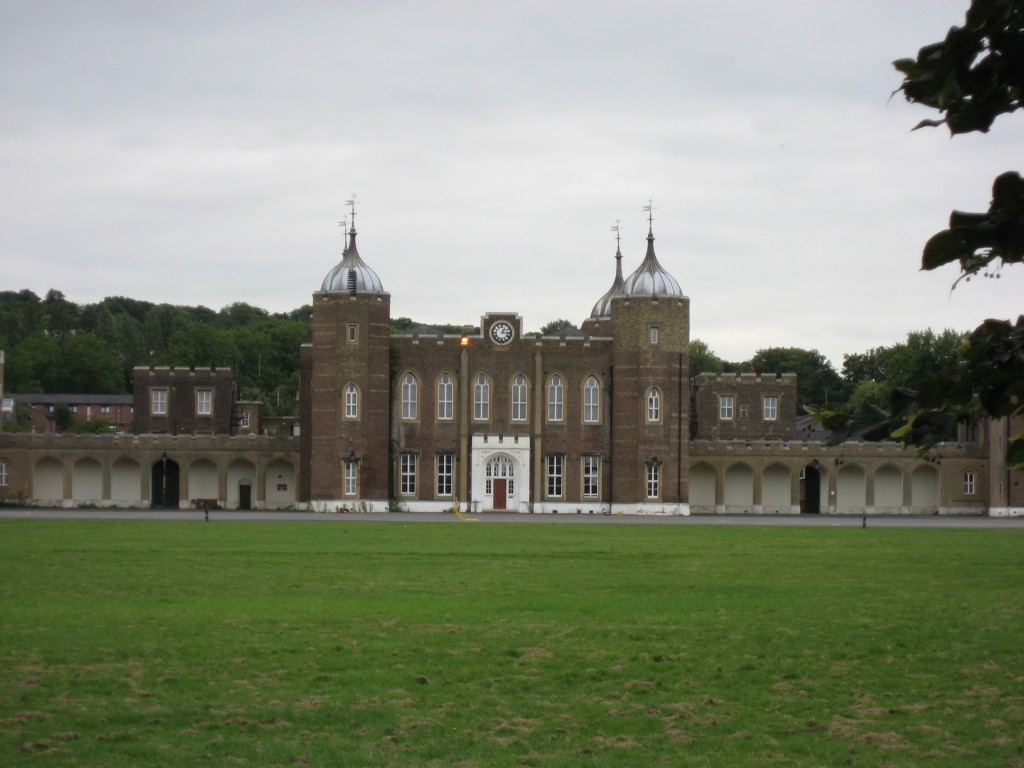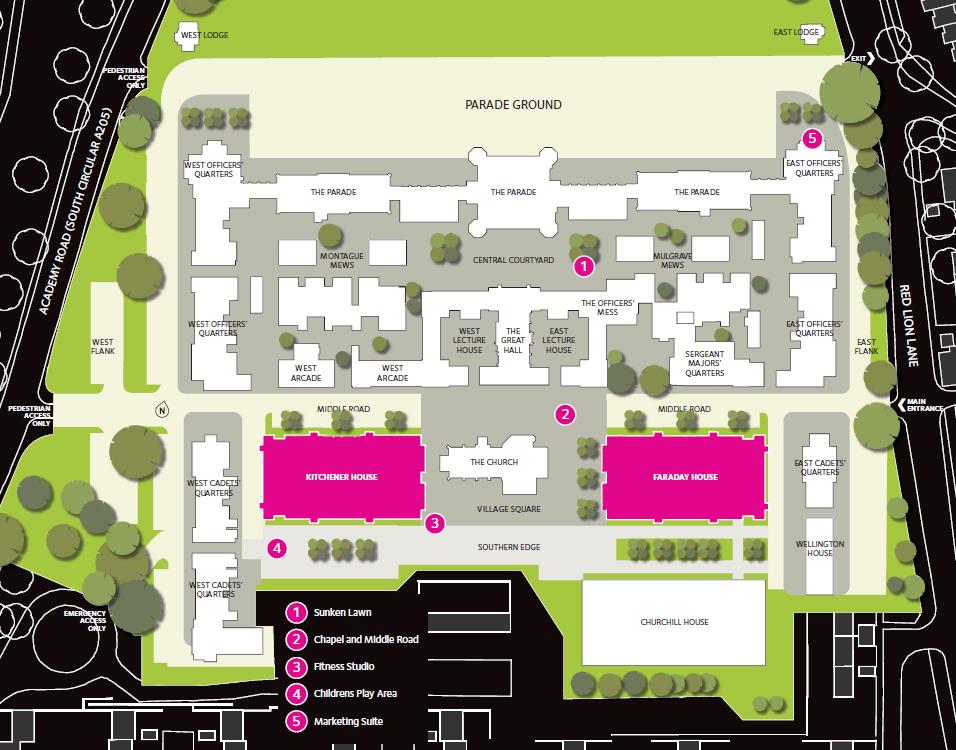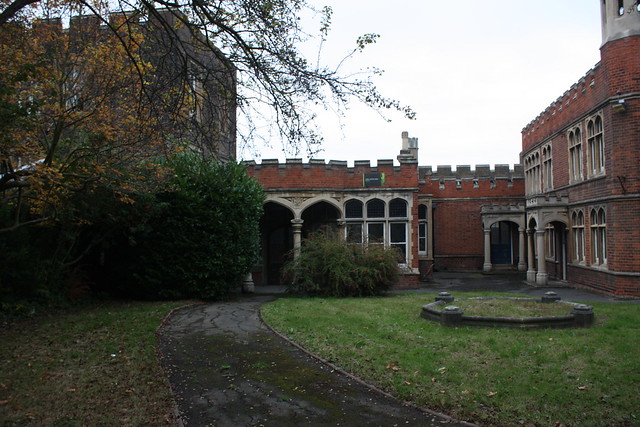
The restoration of parts of our urban environment prompted by the prospect of thousands of visitors is one of the positive side-effects of Greenwich being an Olympic borough. Major Robert John Little’s Memorial Obelisk was an obvious candidate for refurbishment; it is located right in front of the shooting/archery stadium on Woolwich Common, and on the recommended route from Woolwich Arsenal station to the Olympic events. Some might say that its location on the English Heritage “Buildings at Risk” list should have been reason enough to restore the memorial, but …. whatever, it has been restored.
The description of the restoration of the memorial says that the new brass plaques installed on each face of the obelisk are “inscribed with details of Robert John Little’s Life.” However when I visited I found that apart from the front plaque they are all blank, so I thought I’d help out by finding out something about the life Major Robert John Little. Plus I was curious about who he was and why he had a memorial on the edge of Woolwich Common.
The English Heritage draft Survey of London on Woolwich gives some background on the creation of the obelisk, as part of an elaborate drinking fountain:
After the formation of the Metropolitan Drinking Fountain Association in 1858, London was peppered with drinking fountains. This one, in the form of a grey-granite obelisk, was given by Anna Victoria Little, in memory of her late husband, Maj. Robert John Little, barrack-master at the Royal Marine Barracks and formerly a resident of Adelaide Place across the road. It was designed by a civil engineer, E. Gregory, and built by William Tongue, who, ironically, was responsible for enclosing part of Plumstead Common at this time. The obelisk survives, without its faucets, basins, twenty-one encircling cannon bollards or a trough for dogs, but restored with new bollards by Greenwich Council in 2011.

However Major Little was much more than the Barrack Master at the Royal Marine Barracks. For a start he had a distinguished and heroic military career, summarised in Major H.G. Hart’s The New Army List 1849:
Capt Little served in the channel fleet and at the blockade of Ferrol and Corunna in 1803-4. Appointed to the Royal Marine Artillery on the formation of that corps in 1804, and was employed in various bomb vessels on the enemy’s coast co-operating with the land forces, or on detached service. In command of the mortars in the Vesuvius bomb at the attack of Boulogne. Defence of Cadiz in 1809; and subsequently at the blockade of Rochfort, where he commanded a storming party in a successful night attack on the coast, on which occasion he received the particular thanks of the Admiralty, and was rewarded by the Patriotic Fund:- at the commencement of this attack he was severely wounded by a musket ball shattering the wrist which rendered amputation of the right hand necessary.
The 1810 action which led to Major Little losing his right hand was part of the British blockade of the French fleet during the Napoleonic Wars. The story of the battle was recounted in a number of historical books, for example The Naval History of Great Britain, from the Declaration of War by France in 1793, to the Accession of George IV by William James and the Historical Record of the Royal Marine Forces. Vol II. by Paul Harris Nicholas:
On the night of the 27th of September, the boats of the 120-gun ship Caledonia and 74-gun ship Valiant, lying at anchor in Basque roads, were detached under lieutenant A. P. Hamilton to destroy three brigs lying under the protection of a battery at Pointe du Ché ; and as the enemy had a strong detachment of troops in the adjoining village of Angoulin, a party of 130 marines under captains Thomas Sherman and Archibald McLachlan, lieutenants John Coulter and John Couche, and lieutenant Robert John Little of the marine artillery, were added to the division of seamen from the squadron.
At about 2 h. 30 m. a. m. on the 28th the marines were landed under the Pointe du Ché, and the alarm having been given by the brigs, an ineffectual fire was opened from the enemy’s guns. Lieutenant Little, with his detachment of artillery-men, pushed forward with the bayonet to the assault, supported by captain McLachlan’s division, and by a detachment under lieutenants Coulter and Couche; and having gallantly carried the battery, spiked the guns. Lieutenant Little, in leading his men, on entering the fort received the contents of the french sentry’s musket in his right hand as he was in the act of cutting him down, and the wrist was so much shattered as to render amputation necessary. Whilst the attack was making on the fort, captain Sherman, with his division, took post on the main road by the sea side, having his front to the village, and his right protected by a launch with an eighteen-pounder carronade. A party of the enemy succeeded, under cover of the night, in bringing a field-piece to bear with some effect, but the marines instantly charged, and captured the gun. Two of the brigs were brought off, and the third destroyed ; and the marines were now re-embarked, having sustained no greater loss than lieutenant Little and one private wounded. In the defence of the battery on Pointe du Ché, the enemy had 14 men killed.
Lieutenant Little’s battle injury didn’t end his military career, and the Navy Lists indicate that he was promoted first to Captain and again to Major and that he was awarded the Silver Naval Medal with one clasp. He became Barrack Master on 12th September 1829 on a salary of £183 per annum.

In addition to his military career Major Little also seems to have been an inventor, exhibiting his improved watercock at the Crystal Palace in Hyde Park in the Great Exhibition in 1851. As the Exhibition Catalogue says:
476. LITTLE, Major ROBERT J., 4 Queen’s Terrace, Woolwich Common — Inventor.
An improved watercock, with double plug, for connecting pipes without breaking joints, with sectional drawings of the same. Designed by the exhibitor, and manufactured by Frost, Noakes, and Vincent, 195 Brick Lane, Whitechapel.
Was Major Little a one-hit-wonder with his watercock, or did he have a successful career as an inventor? I’d love to find out.
Interestingly Major Little’s 1851 home in Queen’s Terrace was, according to the draft Survey of London, next to Adelaide Place where he also lived. By my reading of the 1866 OS map both of these addresses faced onto Woolwich Common, roughly between where Jackson Street and Engineer Close are now, just over the road from his memorial fountain.
The citation on Major Little’s obelisk says that he “devoted himself to honour of God and to the relief of human suffering.” One way in which he would have achieved this was through his contribution to the Executive and Finance Committee of the Royal Patriotic Fund. The Fund was instigated by Queen Victoria’s 1854 appeal for public donations to assist the widows and orphans of military personnel who were killed in the Crimean War. The appeal was a huge success, collecting over a million pounds in its first six months, and was able to found two schools in Wandsworth as well as providing grants to military widows and orphans. The Patriotic Fund continued in one form or another until just a couple of years ago when it was merged with the Soldiers, Sailors, Airmen and Families Association (SSAFA) Forces Help charity.
I suspect that Major Little was also involved in other charitable work for the Royal Marines Artillery – for two reasons. Firstly the Charity Commission website mentions a charity named “Major Robert John Little“. It gives hardly any details, other than it has been amalgamated with the Royal Marines Welfare Fund. But secondly because, after his death in 1865, his widow, Mrs. Anna Victoria Little, donated the income from £100 to Royal Marine Artillery Benevolent Fund for the “distribution of bread and coals among the wives and families of corporals, gunners, and drummers in H.M. corps of Royal Marine Artillery resident at Portsmouth”. I wonder if Major Little was also associated with the Benevolent Fund. Another topic to keep an eye out for when visiting libraries!
Major Little died on 6th October 1861; The Gentleman’s Magazine and Historical review for November 1861 simply reported:
“Oct. 6. At his residence, Bloomfield, Old Charlton, aged 74, Robert John Little, esq., late Major and Barrackmaster of the Royal Marines, Woolwich.”
He was buried in a family vault at St Lukes Church, Charlton. According to the Kent Archeological Society the inscription on the monument in 1908 was:
164. LITTLE (26). Caroline, wife of Robert John LITTLE, of the Royal Marines, died January 12, 1832, aged 42 years. Richard Rosdew Little, late Captain of the Madras Horse Artillery and Commissary of Ordnance, there died August 23, 1861, aged 46 years. Robert John Little, died October 6, 1861, aged 74 years. He had served in the Corps of the Royal Marines nearly 55 years, joining the R.M.A. in early life and returning in 1837 as Major and Barrack Master of the Woolwich Division, which appointment he held for 28 years. Anna Victoria, relict of the above-named Major Little and daughter of Capt. Henry INMAN, R.N., and sometime Naval Commander at Madras, died March 5, 1866, aged 72 years.
The plan of the churchyard indicates that Major Little’s family grave was just to the left of the church entrance; was, unfortunately, because it’s no longer there, just some remains of brick foundations showing where the grave used to be. Interesting that there is a difference in dates between the monument inscription and the Naval Lists for when Major Little became Barrack Master.

So, still lots of unanswered questions about the Major, but hopefully there is now enough to fill the remaining three brass plaques on his memorial.










